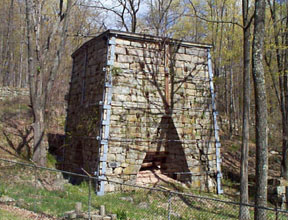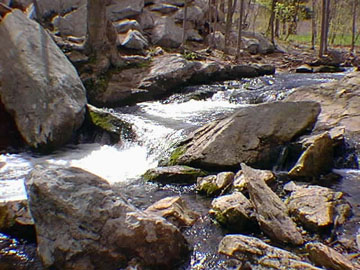18. Wawayanda State Park
Wawayanda State Park is located along the border between New York and the counties of Passaic and Sussex in New Jersey. It is a wonderful place to plan a day outing, either hiking on the extensive system of trails and abandoned mining roads in the area, or paddling a kayak or canoe around Wawayanda Lake. The rocky cliffs around the shallow, clear water bays on the lake are an ideal destination for a picnic in the spring, summer, or fall. Canoes and kayaks can be rented by the hour during the summer. A trail map is available at the visitor center. A twenty mile stretch of the Appalachian Trail runs through the park. An entrance fee is charged during the summer, and camping sites are available.
The park is host to three nature preserves. The Bearfort Mountain Natural Area in the southeast end consists of 1,325 acres of mixed hemlock and hardwood forests along the crest of Bearfort Ridge, a hogback formed by the resistant red puddingstone of the Silurian Skunnemunk Conglomerate. This extensive ridge marks the western flank of the Green Pond Outlier (see the discussion in the next chapter). The Wawayanda Swamp Natural Area encompasses 2,167 acres in the central portion of the park. This area features Atlantic white cedar swamps and mixed oak-hardwood forests. Swamps and bogs in this preserve are relics of a deranged stream drainage system typical of a recently glaciated terrain. The Wawayanda Hemlock Ravine Natural Area includes 399 acres on the north side of the park encompassing a steep gorge along Wawayanda Creek. This steep sided ravine carved into the gneiss bedrock was probably rapidly carved by a larger, more turbulent stream draining the upland areas south of the retreating glacier at the end of the Pleistocene. Its hillsides of the ravine are host hemlock grove which thrives under the coil, moist, and shady conditions.
Next to Wawayanda Lake, an old mine road leaves the parking area by a boat rental building. It leads southward around the shoreline to the foundation ruins of a gristmill, sawmill, and a charcoal blast furnace (which displays a date of 1846 and the initials of the proprietor, William Ames [Figure 41]). Water-powered bellows provided the blast of air to drive the furnace. It yielded approximately seven tons of very high quality of iron per day (poured daily at noon and at midnight). It was used until 1857 when cheaper and hotter iron ore processing methods using coal became available in Pennsylvania.
 |
| Figure 41. A nineteenth century charcoal iron furnace preserved in Wawayanda State Park. Iron was supplied from typically small magnetite veins in the Precambrian gneiss from throughout the surrounding Highlands. |
The scattered bedrock exposures around Wawayanda consists of light-colored Middle Proterozoic pyroxene granite gneiss with scattered exposures of amphibolite and marble (Figure 42). Many of the large boulders in the woods and around the lake are great glacial erratics. Several large pieces of fossiliferous limestone found in the woods nearby display spiriferid brachiopods and other invertebrate shells. It is unknown whether these beautiful specimens are glacial erratics or pieces of limestone carted in for use in the furnaces. The geologic map of northern New Jersey (NJ State Geological Survey) shows that Wawayanda Fault crosses the area striking northeast through the middle of Wawayanda Lake, running generally parallel to the lake shore at the beach parking area. This fault parallels the general northeast trend of most other faults and folds in the region, including the nearby fold of the Green Pond Outlier. The close proximity of this parallel structure suggests that the Wawayanda Fault is an Acadian structure, but probably has a complex geologic history extending back into the Precambrian.
 |
| Figure 42. White granitic gneiss along a tumbling stream near the charcoal furnace in Wawayanda State Park. |
| Return to the Highlands Province Main Page. |